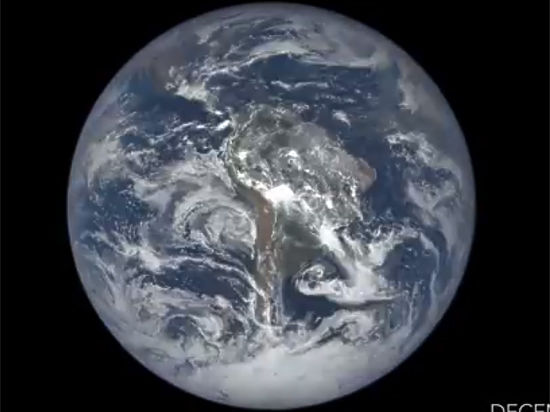Each frame of the video corresponds to two hours
Today, at 12:35, views: 3011
The official channel of the American space agency NASA It appeared in Youtube videos, which can be less than three minutes to see the whole year in the world, how he looked, if you constantly look at our planet from the sun. The video is made up of images taken EPIC satellite instrument DSCOVR, and is accompanied by English-speaking expert commentary.

Photo: youtube.com
The satellite DSCOVR (Deep Space Climate Observatory), was launched from Cape Canaveral in February 2015, resides between the Earth and the Sun in the so-called point point Lagrange L1. At this point, the gravitational influence of the planets and the constellations are balanced, and it keeps the moon, where it should be. Location apparatus allows it constantly to see the Earth from the “day” side, and the sunsets and sunrises on its “edges” fall into the EPIC instrument lens is at least 13 times a day. “Basic” satellite mission is tracking space weather – the solar wind, coronal mass ejections, etc.
Every two hours, the machine makes a series of ten images, each of which corresponds to a certain wavelength of the radiation coming from the Earth . In order to get a picture of which is composed video, scientists have combined several of these frames, especially those in human perception match the blue, green and red colors. Thus, the video in color reminiscent of the spectacle, which would present the person, if he were to place DSCOVR.
Total video consists of about three thousand photographs taken in the period from August 2015 till July 2016. Although such a high rate of change of shots partly hinders see the history of the Earth “in detail”, some leisurely processes – for example, the movement of the clouds – in the video can be traced, experts say. At the end of the second minute video frame rate of scrolling slows briefly to the audience it was easier to see the shadow that the Earth hurled moon during a total solar eclipse on March 9, 2016.
No comments:
Post a Comment